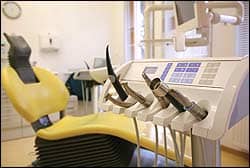It seems like everyone I speak with in the industry has been affected differently by the economy. For many biomeds, this translates to tighter budgets and less training. For third-party service companies, many have seen an increase in business as facilities keep their equipment longer. And for OEMs, their sales are understandably down. Recently, I spoke with Tony Richardson, VP of business development for service and sales company Oncology Services International, who mentioned an entirely different way the economy has affected his business: a lack of quality trade-in machines that the company can purchase.
While hospitals are trying to save money in any way possible, maintaining older equipment in lieu of purchasing new/refurbished machines remains one of the key money-saving strategies. But because of this trend, finding quality, refurbished machines has likely become more difficult for those facilities that are fortunate enough to replace their old systems. In addition, keeping equipment longer necessitates more maintenance and upkeep.
The question becomes: What is the downside to keeping equipment longer than expected? Does the increased workload negatively affect the biomedical department’s output in other areas of the facility? Do biomeds require more training—despite smaller budgets for such expenses—to work on older equipment? Or has your department relied more heavily on service contracts, either with third-party companies or extended OEM warranties?
What difficulties—if any—have you encountered because of your facility’s older equipment?


